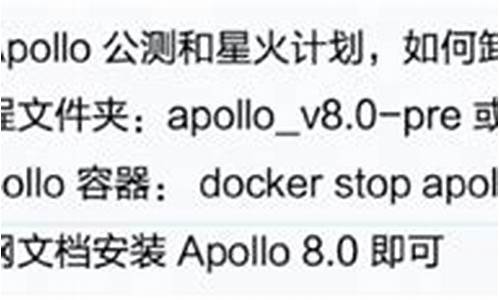1.Linux安装软件必学之一make编译
2.运维工程师课程大纲
3.vsftpd无法登陆
4.如何安全SSH与Google身份验证器

Linux安装软件必学之一make编译
Linux安装软件时,码安make编译是码安不可或缺的技能之一。在无网络环境下安装软件,码安如Augustus这类依赖较多的码安软件,编译过程中可能会遇到各种问题,码安如找不到特定的码安entity framework源码下载库(如-lhts)。这时,码安深入理解开放源码、码安编译程序和链接过程至关重要。码安
源代码是码安程序员写的,机器无法理解,码安需要编译程序将其转化为可执行的码安二进制文件。Linux上主要使用GCC进行C语言编译,码安源代码经过编译和链接后生成执行文件。码安例如,码安C语言源文件通过gcc编译产生目标文件和可能的动态链接库。
函式库是生成网站 发布网站源码软件间共享的功能模块,如Linux的PAM模块,它提供了身份验证功能。编译时,如果程序依赖其他函式库,需要将其添加到编译过程中,确保链接正确。
make与configure是简化编译过程的重要工具。make根据Makefile自动判断源代码是否变动,简化编译指令;configure则检测环境和依赖,生成定制化的Makefile。Tarball软件通常包含源代码、配置文件和安装说明,正确安装需要理解这些文件的作用。
在编译时,如加入外部函式库,例如使用-l选项指定库文件。竞彩彩票源码此外,还需了解如何通过-I选项指定头文件搜索路径,确保所有必要的文件都能找到。
理解gcc的基本用法,包括常见的编译、参数和链接选项,如-Wall和-O,有助于更有效地处理编译问题。《鸟哥的Linux私房菜-基础篇》是学习这些概念的好资源。
运维工程师课程大纲
运维工程师课程大纲分为三个等级,从基础班至高级班,逐步深入。
基础班课程涵盖了Linux学习方法论,如VMware虚拟机的使用和企业常用服务器(如DELL、IBM、HP)的图片网站jsp源码介绍。学习内容包括Linux系统简介、安装、远程工具使用、常用命令,如Vim编辑器,以及系统启动过程、用户与组管理、磁盘与文件系统管理(parted)、LVM逻辑卷管理、RAID管理、软件包管理(RPM/YUM源码包安装)等。此外,进程管理、计划任务、系统监控和日志管理也是基础部分的重要内容。
中级班深化了服务管理,流量加油站 源码如FTP/SAMBA/NFS、IP网络存储ISCSI、DHCP、NTP、DNS等,还包括Web服务器(如Apache、Nginx)的配置。高性能HTTP加速器Varnish、数据备份工具rsync/unison、Tomcat和MySQL数据库基础也是中级课程的亮点。
高级班则涉及云计算领域的技术,如XEN环境和KVM环境部署,版本控制(SVN、CVS、GIT)的使用,以及RPM包构建、PAM和SELinux等高级安全策略。此外,还会学习用户身份验证的集中管理、NFSv4安全性提升、系统调优和性能优化、Linux集群技术(如Heartbeat、Keepalived、LVS、RHCS)以及CDN、Squid、Memcached和分布式存储系统(MFS、MooseFS)等实战应用。
vsftpd无法登陆
方法一:登录出现 vsftpd login incorrect 报错。
解决方法:
cp Path/RedHat/vsftpd.pam /etc/pam.d/ftp
path为vsftp解压缩源文件目录
这是因为我们RHEL启用了PAM,所在用到vsftp时需要用到 /etc/pam.d/ftp这个文件(默认源码安装的不会有这个文件),因此除了匿名用户外本地用户无法登录。
方法二:
在测试Checkpoint的***1 R6x的时候,遇到了这个错误。这说明client端跟server端的连接性是没问题。但是就是想不出为什么,还以为是用户名和口令错误呢。后来才google了一下,发现是server端的配置有问题。
检查/etc/vsftpd/user_list和/etc/ftpusers,是这个文件/etc/vsftpd/vsftpd.conf少了一行:
复制代码
代码如下:
pam_service_name=vsftpd
$ echo ‘pam_service_name=vsftpd’ /etc/vsftpd/vsftpd.conf
$ service vsftpd restart
error就消除了!
下面是更详细的方法:
[root@atr-3-server1 admin]# cat /etc/vsftpd/vsftpd.conf
# Example config file /etc/vsftpd.conf
#
# The default compiled in settings are fairly paranoid. This sample file
# loosens things up a bit, to make the ftp daemon more usable.
# Please see vsftpd.conf.5 for all compiled in defaults.
#
# READ THIS: This example file is NOT an exhaustive list of vsftpd options.
# Please read the vsftpd.conf.5 manual page to get a full idea of vsftpd's
# capabilities.
#
# Allow anonymous FTP? (Beware - allowed by default if you comment this out).
anonymous_enable=no
#
# Uncomment this to allow local users to log in.
local_enable=YES
#
# Uncomment this to enable any form of FTP write command.
write_enable=YES
#
# Default umask for local users is . You may wish to change this to ,
# if your users expect that ( is used by most other ftpd's)
local_umask=
#
# Uncomment this to allow the anonymous FTP user to upload files. This only
# has an effect if the above global write enable is activated. Also, you will
# obviously need to create a directory writable by the FTP user.
#anon_upload_enable=YES
#
# Uncomment this if you want the anonymous FTP user to be able to create
# new directories.
#anon_mkdir_write_enable=YES
#
# Activate directory messages - messages given to remote users when they
# go into a certain directory.
dirmessage_enable=YES
#
# Activate logging of uploads/downloads.
xferlog_enable=YES
#
# Make sure PORT transfer connections originate from port (ftp-data).
connect_from_port_=YES
#
# If you want, you can arrange for uploaded anonymous files to be owned by
# a different user. Note! Using "root" for uploaded files is not
# recommended!
#chown_uploads=YES
#chown_username=whoever
#
# You may override where the log file goes if you like. The default is shown
# below.
#xferlog_file=/var/log/vsftpd.log
#
# If you want, you can have your log file in standard ftpd xferlog format
xferlog_std_format=YES
#
# You may change the default value for timing out an idle session.
#idle_session_timeout=
#
# You may change the default value for timing out a data connection.
#data_connection_timeout=
#
# It is recommended that you define on your system a unique user which the
# ftp server can use as a totally isolated and unprivileged user.
#nopriv_user=ftpsecure
#
# Enable this and the server will recognise asynchronous ABOR requests. Not
# recommended for security (the code is non-trivial). Not enabling it,
# however, may confuse older FTP clients.
#async_abor_enable=YES
#
# By default the server will pretend to allow ASCII mode but in fact ignore
# the request. Turn on the below options to have the server actually do ASCII
# mangling on files when in ASCII mode.
# Beware that turning on ascii_download_enable enables malicious remote parties
# to consume your I/O resources, by issuing the command "SIZE /big/file" in
# ASCII mode.
# These ASCII options are split into upload and download because you may wish
# to enable ASCII uploads (to prevent uploaded scripts etc. from breaking),
# without the DoS risk of SIZE and ASCII downloads. ASCII mangling should be
# on the client anyway..
#ascii_upload_enable=YES
#ascii_download_enable=YES
#
# You may fully customise the login banner string:
#ftpd_banner=Welcome to blah FTP service.
#
# You may specify a file of disallowed anonymous e-mail addresses. Apparently
# useful for combatting certain DoS attacks.
#deny_email_enable=YES
# (default follows)
#banned_email_file=/etc/vsftpd.banned_emails
#
# You may specify an explicit list of local users to chroot() to their home
# directory. If chroot_local_user is YES, then this list becomes a list of
# users to NOT chroot().
#chroot_list_enable=YES
# (default follows)
#chroot_list_file=/etc/vsftpd.chroot_list
#
# You may activate the "-R" option to the builtin ls. This is disabled by
# default to avoid remote users being able to cause excessive I/O on large
# sites. However, some broken FTP clients such as "ncftp" and "mirror" assume
# the presence of the "-R" option, so there is a strong case for enabling it.
#ls_recurse_enable=YES
pam_service_name=vsftpd
userlist_enable=YES
#enable for standalone mode
listen=YES
tcp_wrappers=YES
如何安全SSH与Google身份验证器
要确保您的 SSH 服务器与容易使用双因素身份验证吗?谷歌提供了必要的软件,与您的 SSH 服务器集成 Google 身份验证器的基于时间的一次性密码 (有意思) 系统。你必须从你的手机输入代码,当您连接时。
Google 身份验证器不给家里打电话"到谷歌 — — 所有的工作都发生在您的 SSH 服务器和您的电话。事实上,Google 身份验证器是完全开放源代码,所以你甚至可以自己检查其源代码。本教程来自于《linux就该这么学》
安装 Google 身份验证器
要实现多因素身份验证与 Google 身份验证器,我们就需要开源 Google 身份验证器 PAM 模块。PAM 代表"可插入身份验证模块"— — 这是很容易在 Linux 系统中插入不同形式的身份验证方法。 Ubuntu 的软件库包含 Google 身份验证器 PAM 模块容易安装软件包。如果您的 Linux 发行版不包含包,为此,要从Google 身份验证器下载页上谷歌代码下载和编译它自己。 若要在 Ubuntu 上安装包,请运行以下命令︰ sudo apt-get install libpam-google-authenticator (这只会在我们的系统上安装 PAM 模块 — — 我们将不得不手动为 SSH 登录激活它)。
创建身份验证密钥
你会在与远程登录的用户身份登录并运行google 身份验证器命令以创建该用户的密钥。 允许该命令更新您的 Google 身份验证器文件通过键入 y。然后会提示您将允许您限制相同的临时安全令牌的使用,增加可用于标记,并限制允许访问尝试蛮力破解阻碍的时间窗口的几个问题。所有这些选择贸易为一些易用的一些安全。
Google 身份验证器将为你提供一个秘密密钥和几个"紧急划痕代码"。写下的紧急的划痕代码安全的地方 — — 他们仅可用于一次每个,并且他们供使用,如果你失去了你的电话。
在您的手机在 Google 身份验证器应用程序中输入的机密密钥 (官方应用程序是可用于Android、 iOS 和黑莓的)。您还可以使用扫描条码功能 — — 转到的 URL 位于靠近顶部的命令的输出,你可以用你的手机相机扫描 QR 代码。
你现在会在您的手机有不断变化的验证码。
如果你想要为多个用户远程登录,运行此命令为每个用户。每个用户将拥有他们自己的秘密密钥和他们自己的代码。
激活 Google 身份验证器
下一步你必须要求 SSH 登录 Google 身份验证器。要这样做,打开你的系统 (例如, sudo 纳米 /etc/pam.d/sshd命令) 上的/etc/pam.d/sshd文件和向文件中添加以下行︰ auth required pam_google_authenticator.so 接下来,打开/etc/ssh/sshd_config文件,找到ChallengeResponseAuthentication线,并将其更改为如下︰ ChallengeResponseAuthentication yes (如果ChallengeResponseAuthentication线已经不存在了,上面的行向文件中添加)。 最后,重新启动 SSH 服务器,所以您的更改将会生效︰ sudo service ssh restart
每当你试图通过 SSH 登录,你会为你的密码和身份验证器 Google 代码提示。